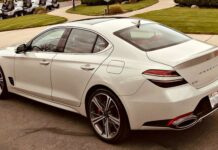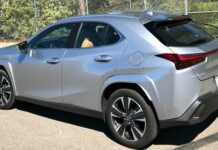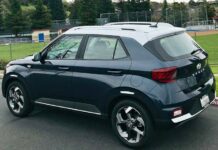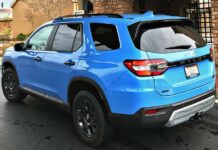Modern-day Range Rovers are indeed luxurious
Roseville, CA- Historically, this sport utility vehicle was popular because it was quite the capable workhorse when it came to taking an off-road adventure.
The first-generation Land Rover Range Rovers were introduced in 1970 and the brand lasted for 16 years. Gradually, the Range Rover became far more sophisticated than the original trailblazers. The modern full-size SUV became a luxury-type vehicle. Its appeal grew in stature when it ultimately became the popular ride of the Hollywood crowd.
And one can easily see why. The modern-day Range Rovers are indeed luxurious, possess lots of technology, provide good comfort and excellent performance, yet retain their initial appeal as a rough and tumble SUV that can travel anywhere. The only competition is the BMW X7, Mercedes-Benz GLS and Porsche Cayenne.
If looking to purchase a 2020 Land Rover Range Rover, beware of the choices awaiting. It’s available as a 4-cylinder, V6 or powerful V8. The choices don’t stop there. Part of the fourth Range Rover generation is a traditional gasoline-powered SUV, a diesel version, or the latest incarnation, a plug-in hybrid (not reviewed here). Also new this year is the turbocharged inline-six replaces the previous supercharged V6.
2020 Land Rover Range Rover
- Performance: 3.0-liter, V6, 340 horsepower; 3.0-liter, turbocharged V6 Diesel, 254 horsepower; 5.0-liter, supercharged V8, 518 horsepower
- Mileage estimate: 19-25 mpg; 22-28 mpg; 15-20 mpg;
- Price estimate: $90,900 to $210,900; $97,400 (plug-in hybrid)
- Warranty: 4 years/50,000 miles; drivetrain: 4 years/50,000 miles; roadside assistance: 4 years/50,000; corrosion: 6 years/unlimited
Off Road Chops and Performance
What hasn’t changed is the Range Rover retains its off-road chops. Every variant of the Range Rover is equipped with the next-generation system of off-road control (Terrain Response 2 Auto). The system provides heightened capability across every terrain and automatically adjusts to driving different road surfaces and conditions. All Range Rovers have a permanent four-wheel drive system and a two-speed transfer case for high and low ranges. Ground clearance is a maximum 35.4 inches.
The standard Range Rover engine is a 3.0-liter, inline-6 that delivers 340 horsepower. The upgraded HSE model has the same engine, but has 395 horsepower. The turbo-diesel is a 3.0-liter, V-6 that generates 254 horsepower and 443 pound-feet of torque. There’s also a 5.0-liter, supercharged V8, that offers 518 horsepower. More performance (and costs) can be added in the Autobiography and SVAutobiography models.
If fuel economy is a strong consideration, the diesel version is the way to go. It gets 22-28 mpg. The hefty vehicle weighs 5,100 pounds and every Range Rover comes standard with a selectable all-wheel-drive system and an eight-speed automatic transmission.
While some auto experts find the Range Rover’s ride quality suspect – “ponderous handling and steering” – that wasn’t the case here. For such a large vehicle, the Range Rover provides a solid grip on challenging roads and cruises along effortlessly in freeway situations. We found it fairly agile for a large SUV and one that excels in off-road conditions.
Interior
There’s plenty to admire regarding the Range Rover interior. Among the standard features are leather seats, wood-veneer trim, Apple CarPlay and Android Auto, and heated leather steering wheel. In the safety department, forward-collision warning, automated emergency braking and lane-departure warning are all standard.
Not all is right with the interior makeup. We’re not huge fans of having two screens on the dashboard. The upper 10.0-inch screen can be a bit slow in reacting to touch inputs, while the second screen resides lower on the dashboard and is used for climate controls, driving modes, and various other vehicle settings.
The front seats in the Range Rover deliver considerable comfort with ample head and leg room. The second row is a 60/40 split that offers solid room for all three passengers. Because there is no third row, the cargo area in most versions of the Range Rover is sizable at 31.8 cubic feet and expands to 68.6 cubes with the second row folded down.
Price
The elephant in the room is price – any adaptation of the Range Rover is not cheap. The starting price is nearly $91,000 and can climb to an exorbitant $211,000 when equipped with everything imaginable. But buying a 2020 Land Rover Range Rover means one possesses an enticing luxury SUV that can deliver bigtime in off-road situations.
(21+ years strong)
Welcome to the brighter side!
Get in front of local customers! 24/7 (365)























